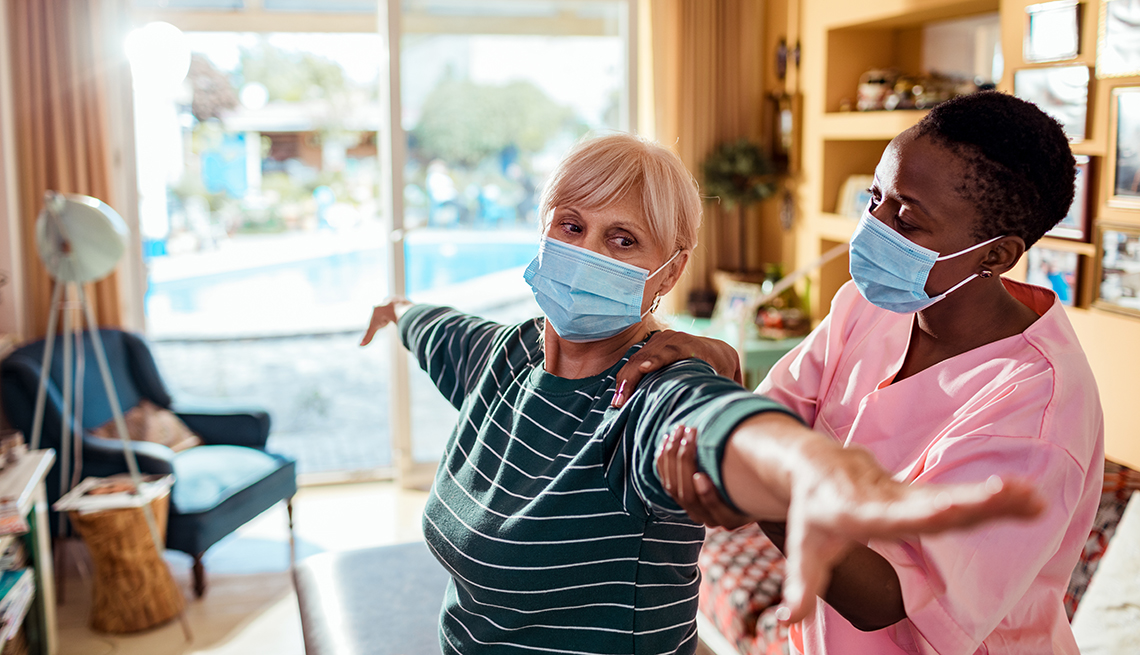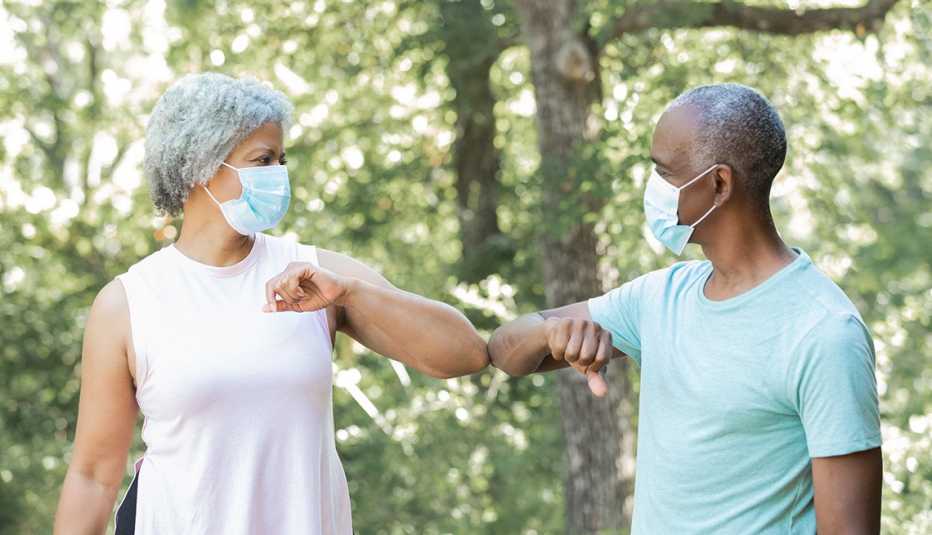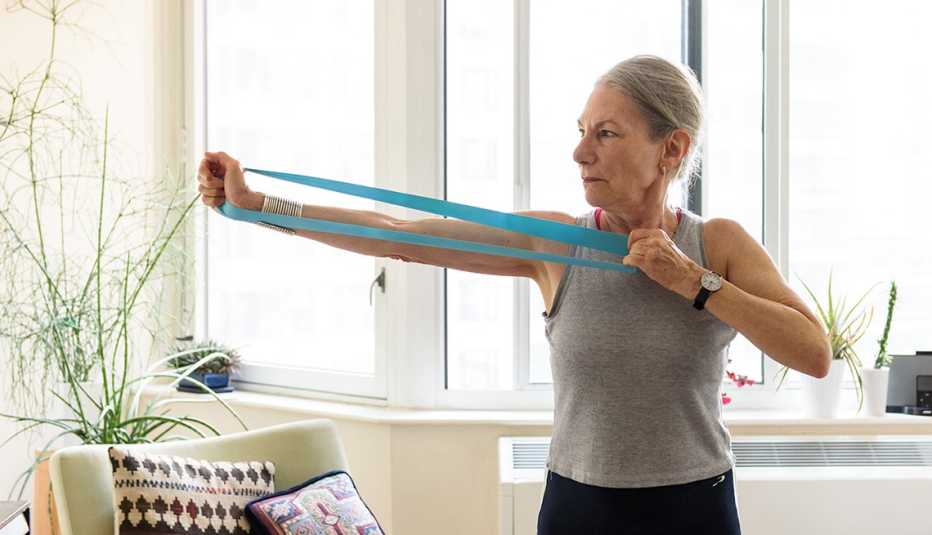Turning to a fellow physical therapist for help
Before she got sick with COVID-19, Kathy Hidalgo was very physically active. She was not only constantly on the move in her work as a physical therapist but also went jogging and lifted weights at the gym three to five times a week. She came down with COVID-19 on Mother's Day in 2020. At first, Hidalgo tried to tough it out at home, but with a fever of 103, she felt so weak that she had to crawl to the bathroom. From there, bilateral pneumonia put her in the intensive care unit of the hospital for four days.
After 12 days in the hospital, she returned home and was shocked at how difficult it was to perform basic activities. “I could only walk up four stairs,” says Hidalgo, now 54, who lives in Hockessin, Delaware. “Then I'd have to rest. And I was so weak that I couldn't carry a coffee mug across the kitchen floor. The muscle wasting was profound, and I lost 15 pounds without trying.”
For a while she tried to build up her strength on her own, by walking and lifting weights at home. “There was a point where I hit a wall and I wasn't getting anywhere on my own,” she recalls. Fear, she says, was part of the problem — she worried about expending all of her energy doing physical activity and not having any left to get through the rest of her day.
Hidalgo, who has a black belt in tae kwon do, realized she needed help, so she began working with a physical therapist at ChristianaCare in September 2020. Together they developed a circuit training plan, using her body weight or handheld weights, which catered to specific weaknesses (such as those in her calves and quads) and that alternated between upper-body and lower-body work. She also did aerobic work on the treadmill. Being able to monitor her vital signs while she exercised gave her peace of mind that she wouldn't overdo it.
After six weeks of sessions, Hidalgo's physical therapist told her that she was ready to fly solo, using the program they developed. “It's over a year ago that I got diagnosed, and I'm still working on it,” says Hidalgo, who does a lot of walking and goes to the gym three times a week. While she has her sights set on running a 5k, she's still trying to regain her previous energy and improve her stamina. “I'm not where I want to be yet,” she says, “but I'm making improvements, month by month.”
Jack Dunn
Courtesy Reed Dunn
Building mind and body strength with yoga, walking and weights
Jack Dunn, 87, of Pittson, Pennsylvania, contracted COVID-19 in early December 2020. It came on quickly: In the span of three days, he went from feeling normal to terrible — with shortness of breath, fatigue and body aches. Because he has had chronic obstructive pulmonary disease (COPD) for 20 years, Dunn was particularly concerned about his breathing. Also, the neuropathy in his left leg and foot worsened with the virus, and he lost 18 pounds from his already slim figure. Dunn spent four days at Geisinger Hospital, then did physical rehabilitation at home a couple of times per week, for several weeks, while continuing to recover. He would walk 10 minutes every day and follow that with a series of balance exercises.
"It was a slow process, and I'm still not completely back to where I want to be,” says Dunn, who has a grown son and lives with his partner, Naomi, in a senior community. These days, he walks on the treadmill for 20 to 30 minutes, taking breaks as needed, three times a week, with Geisinger's 65 Forward program, which is geared toward older people. He also uses handheld weights, to build up arm strength, and participates in chair-yoga classes two mornings a week, to improve his mental outlook.
"I couldn't visualize myself on the floor doing yoga, so I decided to try chair yoga,” says Dunn, who worked in planning and community development for the government before retiring. “It's been helpful for my mental outlook, my flexibility, and I'm feeling physically stronger. In the last six weeks, I've been feeling pretty good.”






































































